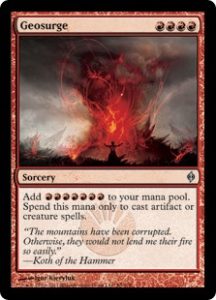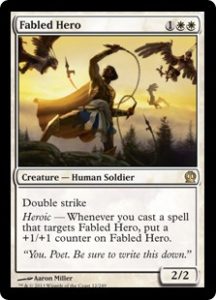Want to try building a Magic deck?
Are you a newer player to Magic: The Gathering (MTG) and want to try building your own deck? Maybe you’re an older player that never had much success when making your own deck. Or maybe you’re just looking for a few tips and tricks to help give that slight edge over your friends. In this guide, I’ll outline a few things I’ve learned over the past 10 years of playing Magic and give you a few templates that I use whenever I feel like making a new deck or even just adjusting one I already have.
Which style of deck should I make?
There are so many different  possibilities when it comes to building MTG decks that it can seem overwhelming at first. When you start building any new deck, you have to ask yourself, “What do I want this deck to do?” If you want your deck to focus on getting out powerful creatures with high mana cost, then maybe you would want your deck to have lots of sorcery spells that help you get out more land cards, like Rampant Growth, or cards that add mana directly to your mana pool, like Geosurge or Dark Ritual, so that you can summon those big creatures sooner. The key to these types of decks is making sure that you also have a few lower cost creatures so that you aren’t stuck with no creatures out on the field while you wait for that last land card you need to play your powerful creatures. Instead of low cost creatures, you could also use low cost burn spells, like Lightning Bolt or Searing Spear, to either destroy your opponents creatures or to deal damage directly to them.
possibilities when it comes to building MTG decks that it can seem overwhelming at first. When you start building any new deck, you have to ask yourself, “What do I want this deck to do?” If you want your deck to focus on getting out powerful creatures with high mana cost, then maybe you would want your deck to have lots of sorcery spells that help you get out more land cards, like Rampant Growth, or cards that add mana directly to your mana pool, like Geosurge or Dark Ritual, so that you can summon those big creatures sooner. The key to these types of decks is making sure that you also have a few lower cost creatures so that you aren’t stuck with no creatures out on the field while you wait for that last land card you need to play your powerful creatures. Instead of low cost creatures, you could also use low cost burn spells, like Lightning Bolt or Searing Spear, to either destroy your opponents creatures or to deal damage directly to them.
Now, if you’re main focus for your deck is going to be buffing your creatures, whether that be with enchantments, equipments, or auras, you will want to find some creatures who’s own abilities compliment the other buff cards. For example, if your deck is mostly going to be enchantment-auras, then you might want to think about using creatures with the Heroic ability, like Fabled Hero or Phalanx Leader, which gives the creature another buff whenever you target it with a spell, that way the creature gets the buff from their ability as well as the buff from the enchantment. There are even creatures that get stronger simply by having equipment cards attached to it, like Myr Adapter or Loxodon Punisher. The only problems I have ever had when building a deck with mostly enchantments or equipments is that sometimes I have too many of them and I don’t have enough creatures in the deck to make it effective. Just keep that in mind if this is the style of deck you are making.
How many cards should I put in my deck?
The standard 60 cards is generally a good number to stick with if you are a newer player because it should give you a consistent play-through of the deck each time you play it. When making a deck, I tend to stick to about 20-25 lands per deck. Having a third of the deck as land will give you a better chance of getting the right amount of land cards to be able to play the spells you need to. That amount also makes it easy when building multi-color decks because its easy to split it for two or even three colors without risking not getting the land you need.
When it comes to adding the rest of the cards to your deck you need to think about a few things, but the main things are what colors you are using in the deck and the style of deck you are building. If you were building a deck focused on big creatures you might want to have the full 25 land cards, around 10-15 low cost creatures or lower cost spells, about 10 high cost creatures that are more powerful, and then round the deck out with 10-15 fetch lands and mana add spells. While a deck focused mainly on buffing creatures would be built slightly different. You would probably want to stick closer to 20 lands for this deck, 20 Heroic cards if you are using auras or 20 cards like Myr Adapter and Loxodon Punisher if you are using equipment cards, and then round the deck out with 20 enchantment-auras or equipments.
Just following this simple guide gives you two templates to use when building decks that gives you an almost unlimited amount of decks you can build. Give it a shot the next time you want to make a deck and you should find that you’ve built a deck that should give you a consistent play-through of the deck every time.
